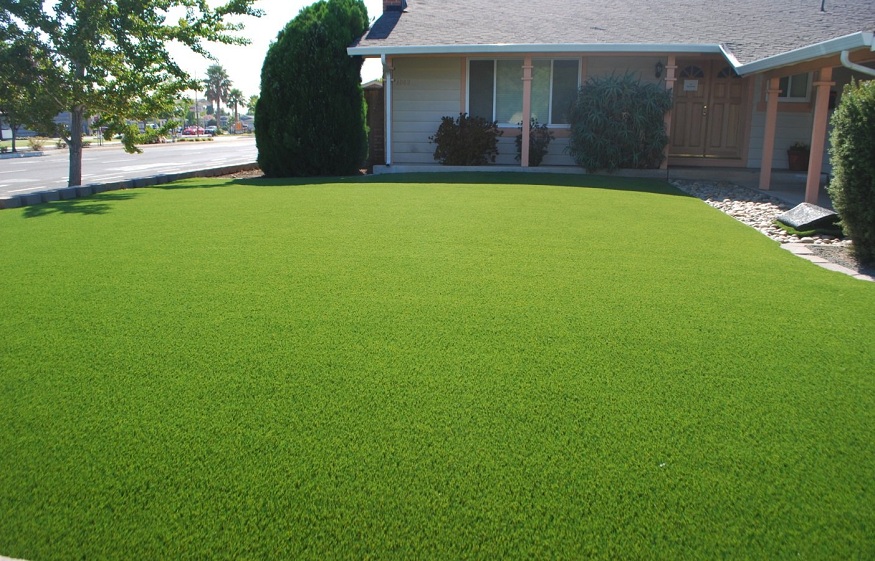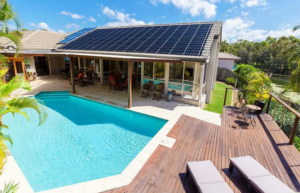A Greener Tomorrow: How Artificial Grass Is Revolutionising Landscaping
The Rise of Artificial Grass in Landscaping
In recent years, there has been a growing concern about the environmental impact of traditional landscaping practices, particularly the excessive use of water and harmful chemicals in maintaining natural grass lawns. As the world continues to face the challenges of climate change and resource depletion, the quest for more sustainable and eco-friendly alternatives has intensified. Enter artificial grass, a revolutionary solution that is reshaping the way we approach landscaping and paving the way for a greener tomorrow.

The Environmental Toll of Natural Grass Lawns
For decades, natural grass lawns have been the go-to choice for homeowners, commercial properties, and sports fields alike. While they certainly provide aesthetic appeal and recreational spaces, the environmental cost associated with maintaining natural grass is substantial. Water scarcity has become a critical issue in many regions, and maintaining lush green lawns demands vast amounts of water. Additionally, the excessive use of fertilizers, pesticides, and herbicides to keep the grass looking pristine contributes to soil contamination and water pollution.
Furthermore, the mowing of natural grass requires fuel-powered lawn mowers, which release greenhouse gases and other pollutants into the atmosphere. Collectively, these practices have a negative impact on ecosystems, biodiversity, and overall environmental health.
The Emergence of Artificial Grass
Artificial grass, also known as synthetic turf or fake grass, is an innovative alternative that addresses many of the environmental concerns posed by natural grass lawns. Initially developed in the 1960s for sports fields, artificial grass has evolved significantly in recent years and is now a popular choice for various landscaping projects.
Modern artificial grass is designed to replicate the look and feel of real grass while providing several eco-friendly benefits. It is made from synthetic fibres, typically a combination of polyethylene and polypropylene, which are both durable and recyclable. Unlike natural grass, artificial grass requires minimal water to stay clean and green, reducing the strain on local water resources and promoting water conservation.
Environmental Advantages of Artificial Grass
Water Conservation: One of the most significant advantages of artificial grass is its ability to conserve water. With water scarcity becoming a pressing global issue, the decreased need for irrigation with fake grass can significantly reduce water consumption in landscaping.
Chemical-Free Maintenance: Unlike natural grass, artificial grass does not require regular application of fertilizers, pesticides, or herbicides. This eliminates the risk of harmful chemicals leaching into the soil and waterways, benefiting both human health and the environment.
Reduced Greenhouse Gas Emissions: With no need for mowing, artificial grass reduces the use of gas-powered lawn mowers, leading to lower emissions of greenhouse gases and air pollutants.
Long Lifespan and Recyclability: Artificial grass has a long lifespan, usually lasting up to 15-20 years or more, depending on usage. Additionally, at the end of its life, the materials used in synthetic turf can be recycled, further reducing its environmental impact.
As environmental awareness continues to grow, the demand for sustainable landscaping solutions has never been greater. Artificial grass emerges as a promising and transformative option, offering a path towards a greener tomorrow.
Versatility of Artificial Grass
Artificial grass has proven to be incredibly versatile, finding applications in various sectors beyond traditional landscaping. Let’s explore some of the practical benefits of this innovative solution:
Sports Fields and Playgrounds: The sports industry was one of the first to embrace artificial grass, and for good reason. Synthetic turf provides a consistent and durable playing surface that can withstand heavy use, making it ideal for soccer fields, football fields, golf courses, and playgrounds. Additionally, its all-weather capabilities ensure year-round playability, regardless of the climate.
Urban Landscaping: Artificial grass is increasingly being incorporated into urban landscapes, turning concrete jungles into green oases. Rooftop gardens, terraces, and city parks are utilizing fake grass to create inviting recreational spaces for residents to enjoy.
Residential Lawns: Homeowners are opting for artificial grass as a sustainable and low-maintenance alternative to natural lawns. The evergreen appearance, reduced water consumption, and minimal upkeep make it an attractive option for those seeking an eco-conscious landscaping solution.
Commercial and Industrial Spaces: Businesses are also recognizing the benefits of artificial grass for their outdoor spaces. From corporate campuses to shopping centres, synthetic turf enhances the aesthetic appeal of properties while reducing maintenance costs and environmental impact.
Pet-Friendly Landscaping: Artificial grass provides a pet-friendly solution for homeowners and pet care facilities. It is easy to clean, resistant to pet waste, and does not support the growth of fleas or ticks, creating a safe and hygienic environment for animals.
Challenges and Considerations
While artificial grass offers numerous advantages, it is essential to consider potential challenges and take steps to mitigate them:
Upfront Cost: The initial investment in artificial grass can be higher compared to natural grass. However, the long-term cost savings in water bills, maintenance, and replacements can offset the initial expense over time.
Heat Retention: Artificial grass, especially darker varieties, can retain more heat than natural grass, leading to higher surface temperatures. This issue is more pronounced in hot climates. Manufacturers are continuously working on improving the heat dissipation properties of synthetic turf.
Drainage: Proper drainage is crucial to prevent water pooling on artificial grass surfaces. Inadequate drainage can lead to reduced lifespan and potential water damage underneath the turf. It is vital to install the turf correctly with an appropriate base and drainage system.
Environmental Concerns: While artificial grass itself offers several environmental benefits, its production involves the use of non-renewable resources. It is crucial for manufacturers to adopt sustainable practices and explore alternative materials to further enhance the eco-friendliness of artificial grass.
Artificial grass is undoubtedly revolutionizing the landscaping industry by providing a greener and more sustainable alternative to traditional natural lawns. Its versatility and practical benefits extend beyond aesthetics to areas like sports fields, urban landscaping, and pet-friendly spaces. As society becomes increasingly conscious of the environmental impact of our actions, artificial grass presents a compelling solution to mitigate some of the ecological challenges associated with traditional landscaping.
However, as with any innovation, there are challenges that need to be addressed to maximize the positive impact of artificial grass. By investing in research and development and promoting responsible manufacturing and installation practices, the landscaping industry can further enhance the sustainability of synthetic turf.
As more people embrace artificial grass for its environmental advantages and practical applications, we can look forward to a greener tomorrow, where landscaping and sustainability go hand in hand, creating a brighter future for generations to come. Together, let us pave the way towards a more eco-friendly world with the power of artificial grass.


